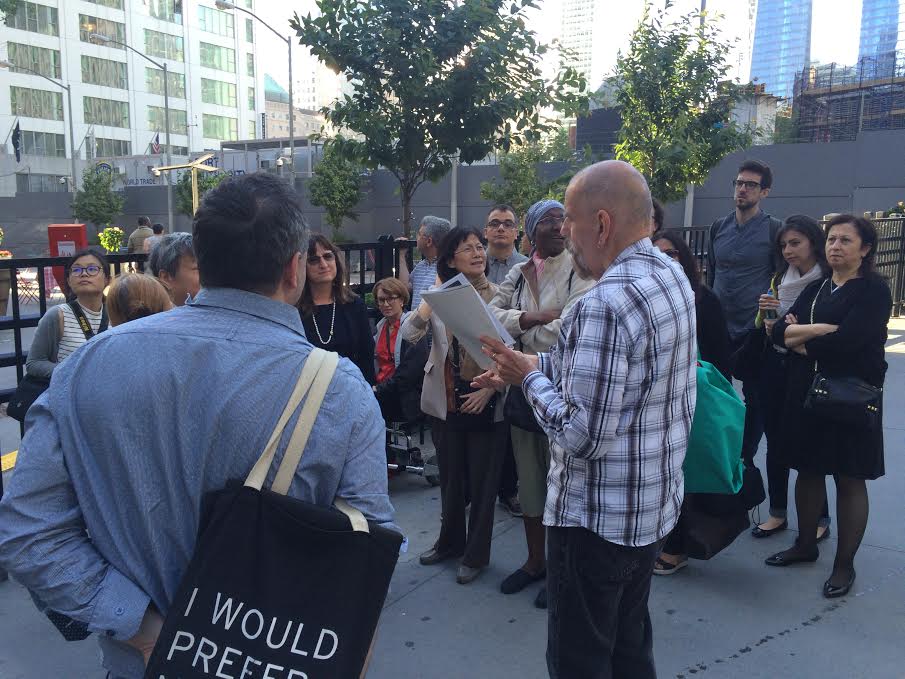 Image via New York City Department of Records
Image via New York City Department of Records
By Abdessamad Kharmaj
Community Associate at NYC Department of Records
In recent years, “Syria” and “Syrians” have become associated with destroyed houses, refugees, war crimes, and terror. Luckily, this was not the case at the end of the 19th century in New York City, where immigrants from the Middle East established the first vibrant and productive community of Arab Americans in the United States called “Little Syria.”
“Little Syria” existed for over six decades as a neighborhood in the lower west side of Manhattan. The neighborhood was the capital of Arabic culture in the United States between the 1880s up to the 1940s and it once covered Washington Street from Battery Park to above Rector Street, roughly in present-day Tribeca. This neighborhood was first settled by Irish and Germans in the 1840s. Beginning in the 1880s until 1924, more than 95,000 Arab immigrants moved to the United States. Fleeing conscription in the Ottoman Empire Army and seeking job opportunities, freedom, and a better future, thousands of Syrians left Greater Syria to start a new life in New York City. Upon arriving, the new immigrants quickly established a new community with all of the institutions of a modern society.
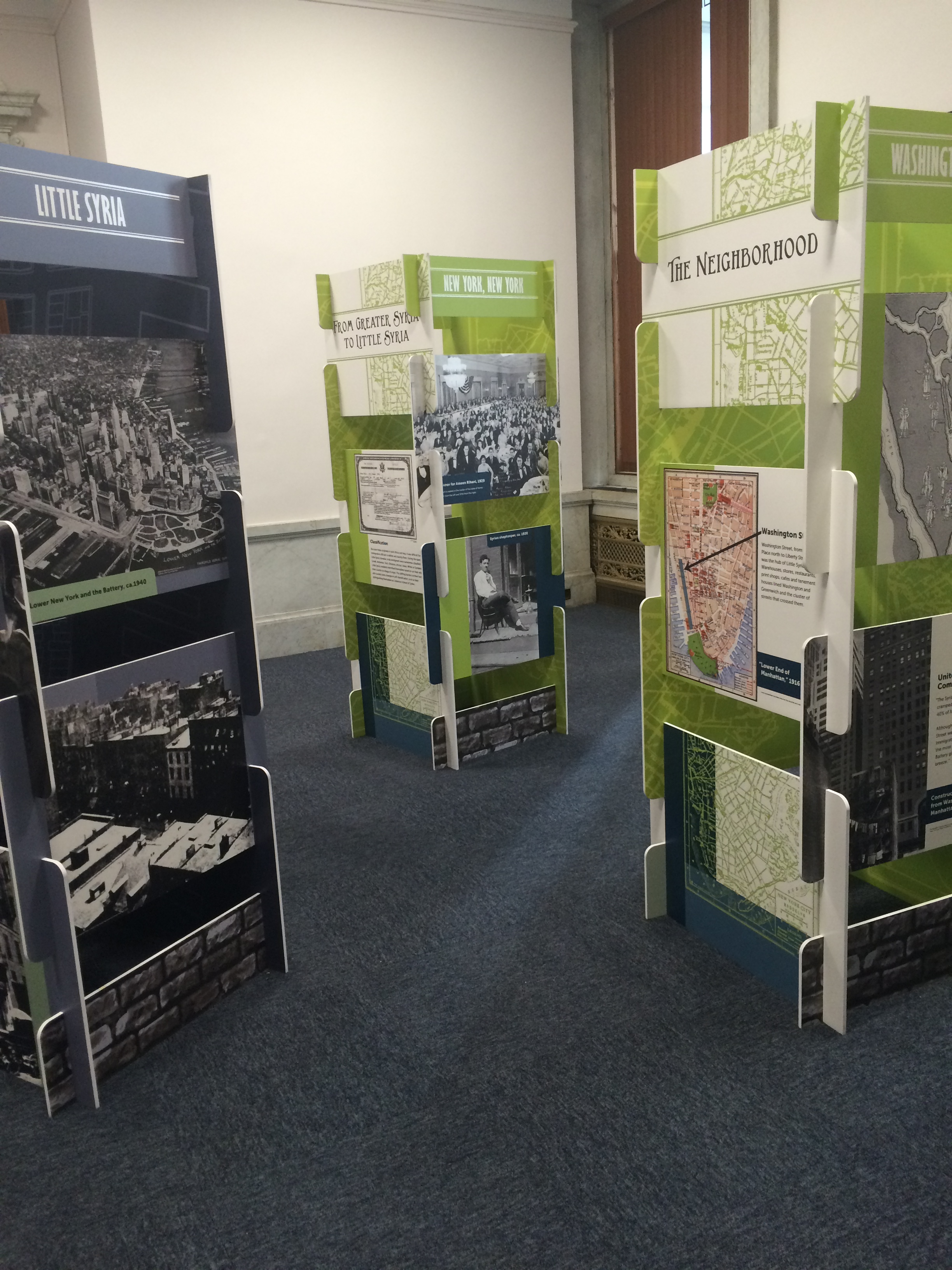 The Little Syria, NY exhibit. Image via New York City Department of Records
The Little Syria, NY exhibit. Image via New York City Department of Records
Many Syrian immigrants found peddling an attractive method to support their families. Hundreds of Syrian peddlers traveled for miles on a daily basis selling laces, linens and trinkets from the Holy Land. Peddling gave the Syrians freedom that they would not have enjoyed at factories or in other occupations. Peddling was not the exclusive preserve of men. Women were also actively engaged in the peddling process, either making the products or selling them. Syrian women peddlers were often welcomed by Irish, German, Eastern European, and other households during a time when women preferred to buy goods from a female peddler.
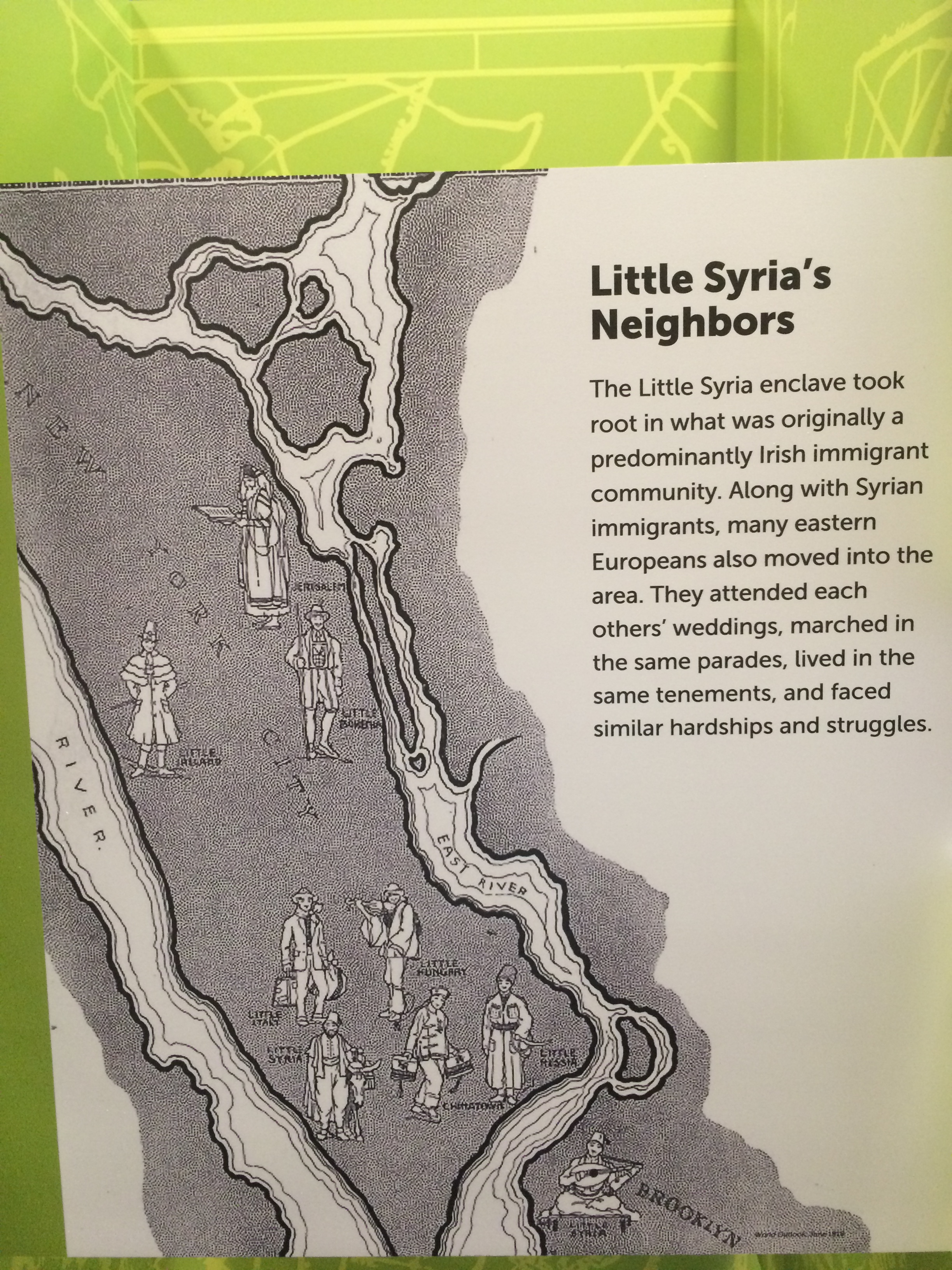 Image via New York City Department of Records
Image via New York City Department of Records
Many of their neighbors assumed that these Syrians were Muslims and were shocked when they discovered that the vast majority of the Syrian immigrants to “Little Syria” were Christians. There were Jews and Muslims too, but mostly Maronite Christians settled in the neighborhood in high numbers. Little Syria was a mixed neighborhood. You would find Italians living next to Syrians, Polish, and Eastern Europeans.
In the hopes of maintaining the cultural link between their homelands and their new homes in Little Syria, the immigrants brought their food and musical instruments such as tablah “gilbert drum.” They made Arabic coffee, known also as Turkish coffee at home. They played Arabic music at weddings. They kept the memory of Syria with them and passed it to future generations.
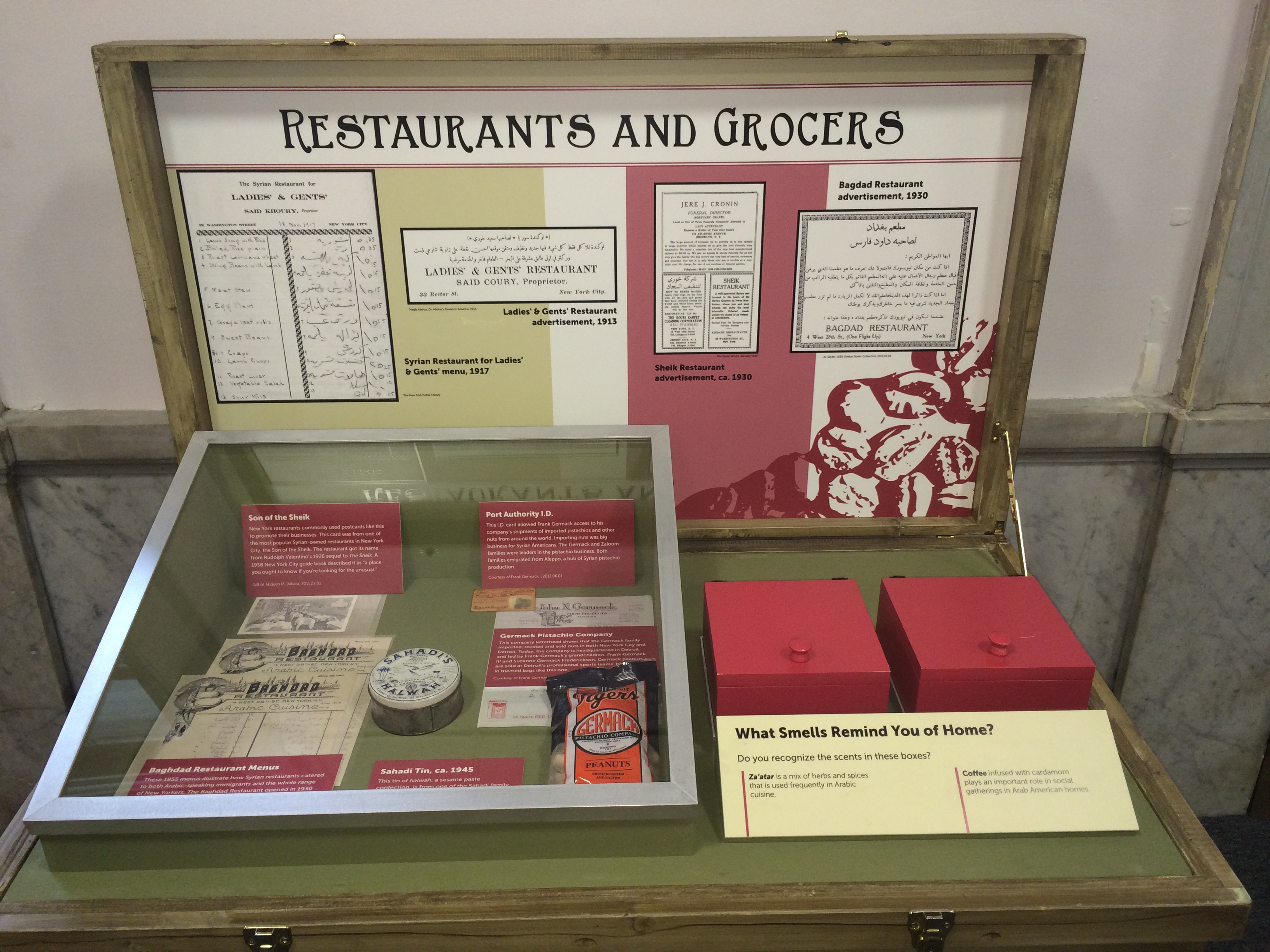 Image via New York City Department of Records
Image via New York City Department of Records
The neighborhood where visitors could smell the strong “Arabic Coffee” from many yards away was also known as the birth place of “the Romantic Movement” in Arabic literature. Many Syrian intellectuals such as Gibran Khalil Gibran, Elia D Madey, Ameen Rihani, among others called little Syria “home.” The pen league, which was a collective of Syrian intellectuals, was established in the neighborhood around 1915. From thousands of miles away, these Syrian intellectuals reformed Arabic literature in addition to fighting the Turks and the French not with rifles but with their pens. “The Book of Khalid” by Ameen Rihani, and “The Prophet” by the Lebanese philosopher Gibran Khalil Gibran are examples of the literary legacy that has spread not only among the Arabic community in New York City but also around the globe. “The Prophet” by Gibran has been translated into over 40 languages and has never been out of print.
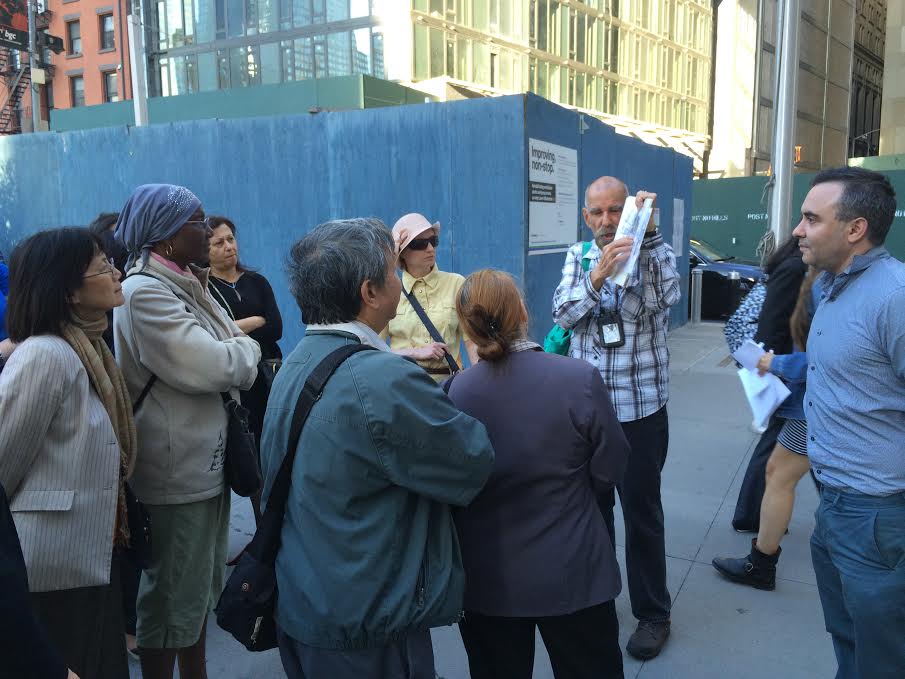 Image via New York City Department of Records
Image via New York City Department of Records
The Department of Records and Information Services and local historians Todd Fine and Joe Svelak are offering tours of Little Syria throughout the summer. The tour begins at 6 pm at the New York City Municipal Archives building at 31 Chambers Street with a visit to Little Syria, NY: An Immigrant Community’s Life and Legacy exhibit from the Arab American National Museum and continues to the former site of Little Syria. This is a great opportunity to discover the unknown history of the area and the impact of Arab-Americans in New York City. Today, the legacy of Little Syria lives within thousands of Arab-Americans, whose grandparents or great-grand parents called Little Syria “home.”
Upcoming Little Syria, NY exhibit and neighborhood tours: July 14th, August 11th and September 9th.
You can read more about the exhibit here.





